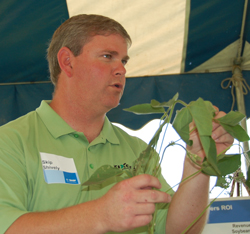 BASF may be excited about the the new herbicide on the block Kixor moving in, but they are continuing to see growers get more profitability from their crop with Headline fungicide.
BASF may be excited about the the new herbicide on the block Kixor moving in, but they are continuing to see growers get more profitability from their crop with Headline fungicide.
While the field day in Belleville, IL on Tuesday was focused on Kixor herbicide technology, Headline had a role to play in the show as well. Western Illinois BASF business rep Skip Shively talked to growers about how Headline can help even late in the season with late-planted crops. “There’s been a tremendous amount of stress on crops this year and the later planting has given us an opportunity to enhance yields with Headline, particularly with disease control in the first part of August,” Skip said.
“The best application timing for corn would be full tassel to the brown silk stage,” he added. “On soybeans, we’re looking at an R-2 to R-3 time frame.”
BASF Kixor Herbicide Technology plot tour photos
Listen to my interview with Skip here:

 There wasn’t a big crowd at the BASF Kixor Herbicide Technology plot tour event in Belleville, IL on Tuesday since many were out spraying, but the nearly 30 who attended were very interested in hearing and seeing what the new family of products from BASF could do for them.
There wasn’t a big crowd at the BASF Kixor Herbicide Technology plot tour event in Belleville, IL on Tuesday since many were out spraying, but the nearly 30 who attended were very interested in hearing and seeing what the new family of products from BASF could do for them.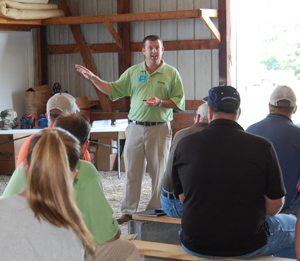 Kaleb Hellwig, who is district sales manager for BASF in the southern MO and IL region, says they have been getting great feedback from growers at field days around the countryside. “All the growers that have been able to see the Kixor family of products work are really impressed with the speed of control and the completeness of the broadleaves that it controls and that it will allow them a better tool to go in and plant earlier in a no-till situation in particular.”
Kaleb Hellwig, who is district sales manager for BASF in the southern MO and IL region, says they have been getting great feedback from growers at field days around the countryside. “All the growers that have been able to see the Kixor family of products work are really impressed with the speed of control and the completeness of the broadleaves that it controls and that it will allow them a better tool to go in and plant earlier in a no-till situation in particular.”
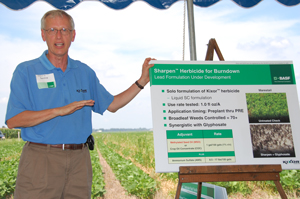

 It’s cheap, it’s easy and it’s a way to communicate one to one with people who might not otherwise hear your message. Those are three good reasons for beef cattle producers to use social media like Twitter and Facebook to reach out in ways they have never been able to before.
It’s cheap, it’s easy and it’s a way to communicate one to one with people who might not otherwise hear your message. Those are three good reasons for beef cattle producers to use social media like Twitter and Facebook to reach out in ways they have never been able to before.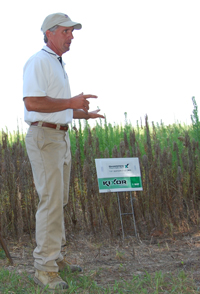

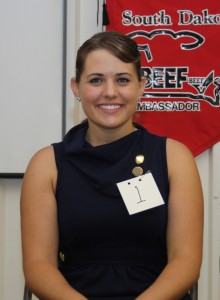
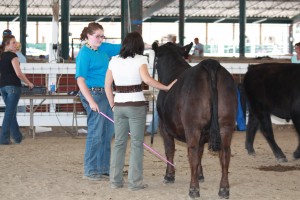
 In this week’s program Cindy and I do a review of some of the ZimmComm activity of late and look ahead. We’re going to continue to roll down the agriblogging highway this summer. Actually Cindy gets to do a little extra in coming weeks while I recuperate from this pneumonia bug. In fact, we recorded the program in my hospital room yesterday! That’s a first.
In this week’s program Cindy and I do a review of some of the ZimmComm activity of late and look ahead. We’re going to continue to roll down the agriblogging highway this summer. Actually Cindy gets to do a little extra in coming weeks while I recuperate from this pneumonia bug. In fact, we recorded the program in my hospital room yesterday! That’s a first.